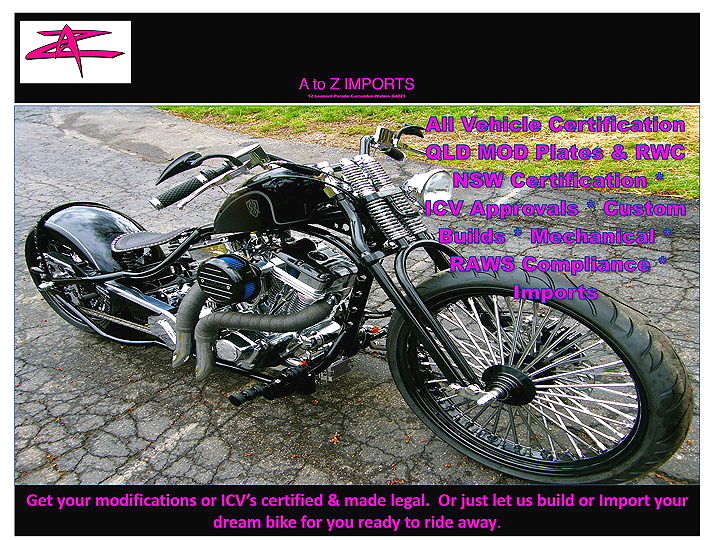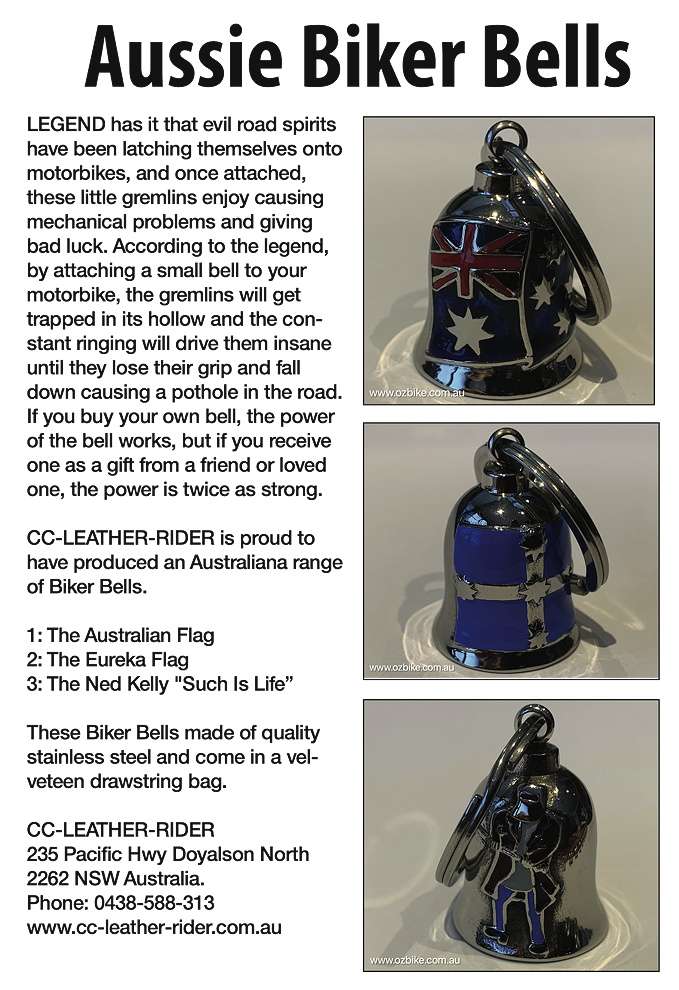S&S Gear-Drive Cam Conversion
WANT MORE power from your Harley? More horsepower and torque are within easy reach—big bore kits, higher compression pistons, modified heads, hot rod cams with higher lift and longer duration—are readily available from a multitude of suppliers. The sky (and your budget) is the limit.
When deciding which cam to chose, keep in mind that ‘street’ bikes usually perform better with mild cams than more radical cams. While bigger cams may produce more peak horsepower, the more conservative cams feel stronger to a street rider because the maximum torque occurs at a lower rpm.
Probably the most important consideration is matching the cam’s intake duration with your compression ratio. Most catalogues from the various manufactures chart their cams with the most suitable compression ratios. You start by finding your compression ratio and short-listing the various alternates. In general, higher compression ratios need longer duration cams; however, too much duration can reduce low rpm torque and power.
Your next consideration is which cams will work with your valve springs. If you’re prepared to fit high-lift springs, your choices are greatly improved. However, if you want to stick with the original Harley springs, you’re restricted to 0.510” lift or the springs will bind with disastrous results.
Okay, so how much mechanical noise are you prepared to put up with? Early Harleys had gear-driven cams which rattled at idle and low engine speeds. The Twin Cam motor runs chain-driven cams with the sole purpose of quietening these mechanical noises—but at what cost! S&S produce a gear-drive cam conversation kit which they claim shows a four hp gain over cams with chains. That’s a five percent increase if your motor is putting out 80 hp. Simply put, if less power is needed to turn the camshafts, more power gets to the rear wheel. We can’t imagine anyone changing to gear-drive cams just to gain four hp, but if you’re changing your cams anyway, you might as well go the full hog.
The brief was installation of a S&S gear-drive cam set in an Elecrta Glide without removing the heads. The bike was already fitted with a big bore kit which raised the compression ratio from 8.8:1 to 9:4:1. This is an ideal application for the S&S 510G cam set which will operate perfectly with the stock head set-up.
The patented S&S gear-drive cams are a must in order to achieve the full potential from high-performance Twin Cam engine. Since the chain-drive system used in stock Twin Cam engines is not adequate to accurately control valve action at high rpm when using high lift cams and high performance valve springs, a different system was needed.
The S&S gear-drive system was developed to improve performance and to eliminate potential engine damage caused by failure of the chain and tensioner system.
For the technically minded, the timing for the 510G cams is 20/38 for the intakes and 52/20 for the exhausts. Duration is 238 degrees on the inlets and 252 degrees on the exhausts with a valve lift of .510”. Centerlines are 99 degrees on the intakes and 106 degrees on the exhausts. Lift at TDC is .187” and .179” respectively.
The 510G cams work best with a compression ratio of 9.7:1 or lower which makes them perfect for this application. After performing various checks on the engine for comparison down the track, work commenced on removing the old chain drive setup.
With engine at TDC of the compression stroke, the inlet and exhaust pushrods can be cut with bolt cutters. Although this seems crude, it is the most efficient way to remove the stock non-adjustable pushrods without pulling the heads. It is the recommended procedure for both S&S and Andrews Products.
Jim’s makes a very useful little kit to unload the tension from the cam chain. A small slotted cup with a hex drive is rotated with a ring spanner to access a special hole for a red-handled pin supplied in the kit. With the pin in place, the tensioner is held out of the way so the sprockets can be removed.
A Jim’s sprocket lock can now be inserted between the sprockets to hold them secure while the retaining bolts are taken out. The sprocket lock is a nifty little device made of very tough nylon and is kind to the components.
The cam followers now need to be held up in their bores to allow the outgoing cams to be removed. There are various ways of doing this; we used a couple of strong magnets to bridge the inlet and exhaust lifter; this worked well.
Six Allen keys hold the cam support plate in place; a further four draw the oil pump up to the back of the plate. With all these removed the cam support plate and cams can be carefully lifted out leaving the oil pump in place.
Now is a good opportunity to check the new cams for clearance between cam lobes and the pinion bearing bosses as well as the underside of the tappet guide bosses. There should be at least .030 clearance in these areas. The 510G pass this test with flying colours but larger cams may need extra clearance.
It is now highly recommended you upgrade the inner cam bearings to Torrington B148 full compliment needle bearings. Jim’s has special removal and installation tools for this procedure.
After removing the original inner cam bearings with the official Jim’s tool, the new ones can be correctly guided into place with a particularly clever Jim’s inner bearing installation fixture.
When installing gear-drive cams, S&S recommends that ball bearings be used for both front and rear camshaft outer bearings. The roller bearing used for the rear camshaft in some stock engines has too much internal clearance. This allows centre to centre distance of gears to vary, causing excessive gear noise. Since the gear drive does not exert a large side load on the rear camshaft, the higher load handling capacity of the roller style bearing is not required.
The dedicated front and rear inner cam gears are now carefully pressed into place onto their respective cams, timed, and pressed into their new bearings in the cam support plate with this specialised Jim’s fixture.
With the O-rings correctly positioned, the camshaft assembly can be carefully lifted into place.
After torqueing the cam support plate into place it is time to check the inner cam gears for the correct lash. Some backlash must be present; .0005” to .0010” is recommended. Cams with 0.000 backlash may wine when running. Backlash greater than .002 is considered excessive and can sound like noisy lifters at lower RPM. Under and oversize gears are available to correct the meshing of tight or loose gears.
In this case meshing was acceptable and we were able to proceed with the installation.
The crankshaft gear (pinion gear) and the cam-drive gear can now be installed. At this point it is extremely important to once again check gear lash. Gear backlash should be checked at four different crankshaft positions by rotating the crankshaft 90 degrees and checking the backlash at each position. After carrying out this test it was found that there was zero backlash. An undersize pinion gear was timed and installed, re-checked and found to be ideal. Grade 8 retaining bolts were then torqued for the final time with Loctite to the required specs.
As the original pushrods will not be re-installed, a set of Andrews Products EZ-install pushrods was selected from the smorgasbord of pushrods held at Redgrave Motorcycles. These beautiful pushrods are the lightest of all the aftermarket rods weighing in at just 62 grams a piece including the EZ-install adjusting mechanism. Stock non-adjustable rods tipped the scales at 78 grams.
To install these pushrods and have enough room to set the adjustment, it is necessary to replace the lower pushrod tubes with shorter Evolution units from Colony. Longer top clips from S&S make up the difference. The original upper inners tubes, centre covers, springs and washers can all be reused.
Now that everything has been checked for the final time, the timing cover is replaced. A James silicone-beaded gasket was used from the cam change kit he supplies. It contains all the necessary gaskets, seals and O-rings required for this procedure.
Initial start up reveals an engine to be quieter than expected considering the straight cut gears driving the cam.
Just how much difference did the S&S 510G gear-drive cam set make? Next issue we will be dyno-tuning the Harley, and re-mapping the Power Commander, at Motorcycle Weaponry in Mona Vale. Stay tuned…
Technical article by Richard Nicholls at Redgrave Motorcycles















I like what I was reading about the S&S 510 cam. I have a friend who has a set of the 510 cams on a 2014 HD Streetglide Special with no engine modification other than the FP3 Tuner, High Flow Inverted Air Filter, V&H Dual Head Pipes and V&H High Out Put Slip ons and man do that bike run. I have the same make year and model FP3 Tuner, V&H Dual Head Pipes with a set of S&S HP 103 Cams but Freedom Slip on Mufflers and my bike does not produce any results in performance even after having it Dyno Tuned. I’m thinking about switching my cams and my mechanic have suggested the (Andrews 57H). What’s some of your suggestions with my bike other than possibly going with the same set up as my friend because I don’t have any intentions of modifying my engine. I normally ride one up, shifting between 2500-3000rpm, sometimes city but mainly highway because I like to hear my pipes rumble and I like to feel torque kinda early and through the gears even at cruising or if I need to get around traffic or a big truck on the highway.